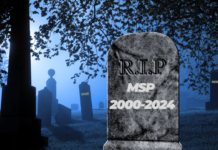A survey by The Diffusion Group found that the overall average rate of failure is 100 percent for disk and tape drives – like the hard drive in your PC and the tape drives people still use to backup data. That means if your drive hasn’t failed yet, it will.
The good news is there are ways to organize and protect data. All it takes is a little planning and the commitment to backing up your hard drive regularly. Here are some tips for organizing, storing and protecting your precious data:
Backup, backup, backup
*
There tend to be two kinds of computer users – those who regularly backup their data and those who plan to; but never do. Every piece of data you put on your hard drive – whether it’s music, video or documents – should be backed up, according to computer expert Richard Doherty, research director for Envisioneering. Many backup systems, however, won’t be able to handle the sheer size of many contemporary video and music files. Often, people resort to multiple backup devices to handle multiple large files. That divergence of data often makes finding all your photos, family videos or music next to impossible.
A better solution, Doherty says, is saving everything to a single external storage device, like the new network attached storage device from LG Electronics (model N2B1DD2). Designed to protect and store multimedia entertainment files, the device uses a proven system of multiple hard drives used for sharing and replicating data to prevent possible damage or loss. With up to two Terabytes of fast hard-drive storage, the system automatically backs up and restores files for added security in the event of hardware failure.
Doherty says the latest NAS technology included in this LG model also includes a Blu-ray DVD re-writer and playback feature for additional backup or file sharing options. That’s very handy for extended families, students with files on campus and home and both at-home and small businesses. It backs up and restores with either Macs or Windows operating systems. What’s more, it’s has a design friendly look so it blends easily into your home environment.
Get organized
You know you stored the video of junior’s piano recital somewhere on your hard drive and you’re ready to upload it to your family’s personal home page so Grandma and all the relatives across the country can see it. But where did you put it on the hard drive? With the volume of data the average PC user places on the hard drive today it’s not surprising that things get lost. We forget what we named a file or where we stored it on the hard drive.
Getting and staying organized on your PC means being able to retrieve data whenever you want it quickly and easily. Follow these tips:
* Separate document files and program files. If your document files are stored with program files, you run the risk of deleting data when you install or upgrade programs. With real time back up and fast transfer speeds, the N2B1DD2 is ideal for the on-demand entertainment needs of most consumers. This model utilizes intelligent, selective mirroring technology which allows users to back up only selected folders. This saves time and maximizes storage options.
* Another way to know what’s in a folder without opening it is to use a thumbnail view and place a picture or clip art on the folder that will clue you as to what’s in it. For example, a folder that holds family photos might have an image of a family member on it. The folder where you store downloaded music might have a musical note. The image acts as a visual clue to help you realize what’s in a folder without having to open it.
* It’s a great idea to use the Documents folder in the Windows operating system to automatically categorize on your PC. But keep completed items separated from things you’re still working on. Use the Documents folder for projects that are in the works and store completed work in a different location, like a special Archive folder, an external hard drive or even to a CD-R disk.
Enjoying your content
Once you have all your movies, videos and photos stored in one convenient place, you can enjoy watching all that content on an advanced LCD monitor like the M237WD from LG Electronics. Stylishly designed, the monitor features a 16:9 aspect ratio, digital TV tuner, full high definition 1080 pixel resolution and multi-screen capability.
It’s perfect for anyone who does a lot of gaming or who wants to use their PC screen to view high definition video or watch TV. Combining your network attached storage device with a 1080p LCD monitor provides the complete multimedia package.












